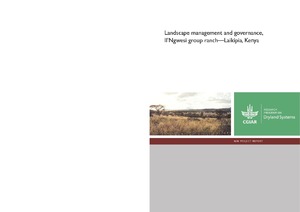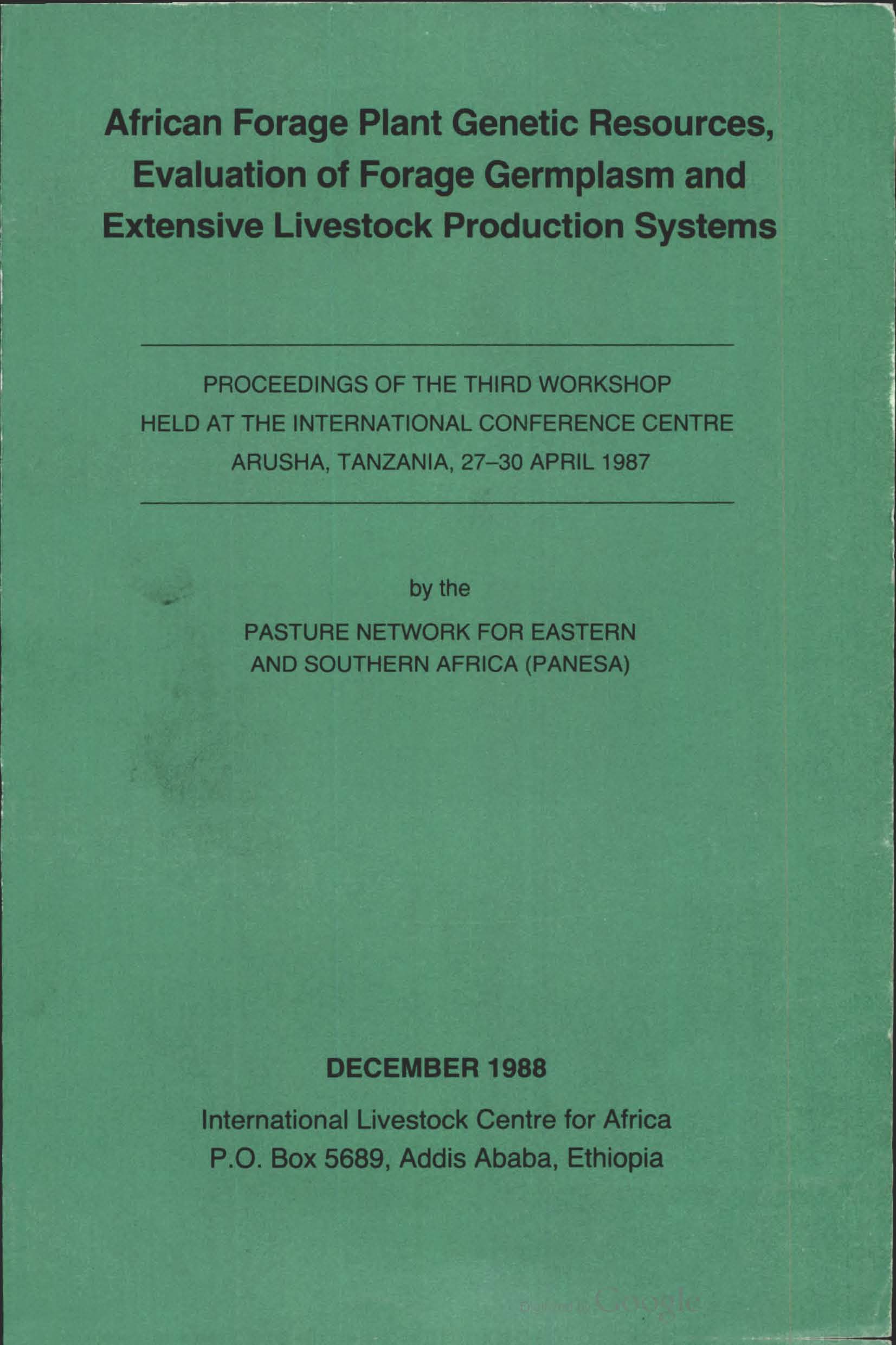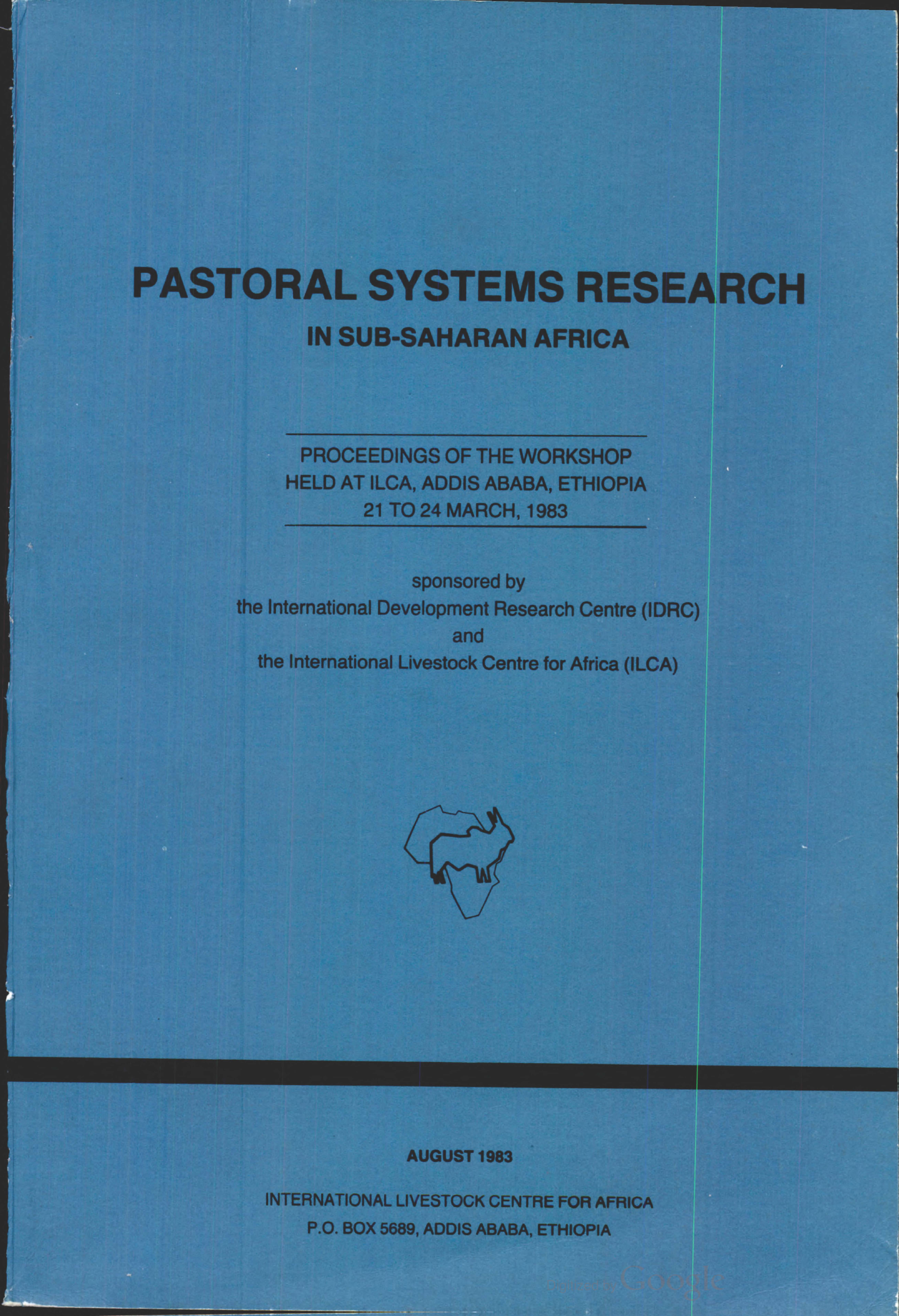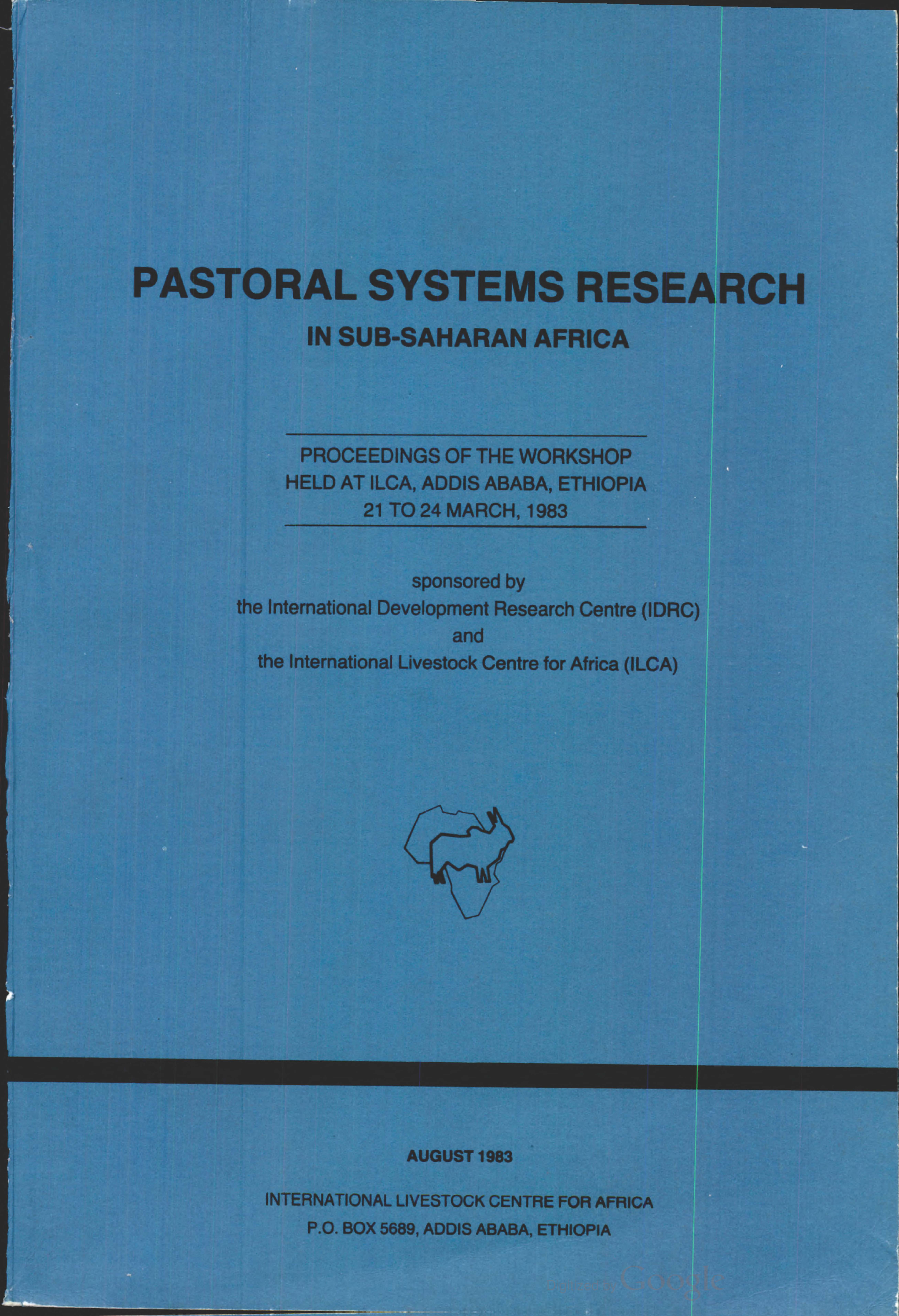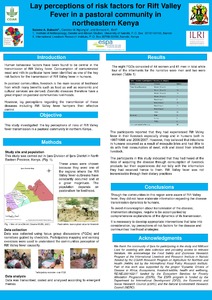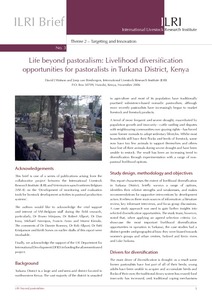La production animale au Mali central
Summarizes a baseline study of the traditional livestock production system of central Mali, classifying production systems in the study in the study zone according to the degree of dependence on livestock products for gross revenue or food supply of the household or production unit, and according to types of agriculture associated w. livestock. Describes primary resources available for livestock production; livestock numbers & movement patterns; the agropastoral system; and the pastoral system associated w. rice cultivation in the Niger innundation zone.
Legume-based cropping. A possible remedy to land tenure constraint to ruminant production in the subhumid zone of central Nigeria
Livelihood mapping and poverty correlates at a meso-level in Kenya
Les activities culturales dans le systeme agropastoral peul du Nigeria central
Examines the extent and methods of crop production in the Fulani agropastoral system in central Nigeria by analyzing cropping patterns, management techniques employed, and inputs to cropping such as labour, draught power & fertilizers, and output in terms of grain yield, energy and crop residues.
Les recherches du CIPEA en 1980
Presents and discusses ILCA's research on smallholder farming in the highlands, village sheep and goat production in the humid zone, cattle production in the subhumid zone, pastoral production in the arid zones of West Africa, range livestock production in eastern and southern Africa, and breed evaluation and herd modelling.
Les vegetations et les ressources fourrageres dans les systemes pastoraux
Discusses the aim of studies on vegetation & feed resources in pastoral systems, describing the collection & presentation of data in the descriptive phase; identification of constraints in the diagnostic phase; and analysis of the impact of selected variables or technical innovations on the systems' functioning, and the development of adapted technology in the experimental phase.
Lay perceptions of risk factors for Rift Valley fever in a pastoral community in northeastern Kenya
Background: Human behavioral factors have been found to be central in the transmission of Rift Valley fever.
Consumption of contaminated meat and milk in particular have been identified as one of the key risk factors for
the transmission of Rift Valley fever in humans. In pastoral communities, livestock is the main source of livelihood
from which many benefits such as food as well as economic and cultural services are derived. Zoonotic diseases
therefore have a great impact on pastoral communities livelihoods. However, lay perceptions regarding the
L'evolution du milieu
Describes techniques of long-and short-term measurements of changes in vegetation and feed resources in pastoral systems, with particular reference to sampling techniques and costs of the various methods.
Lay perceptions of risk factors for Rift Valley fever in a pastoral community in northeastern Kenya
Consumption of contaminated livestock products is one of the risk factors for the transmission of Rift Valley fever (RVF) in humans. In pastoral communities, livestock is the main source of livelihood providing nutritional, economic and cultural services hence zoonotic diseases tend to be more prevalent in such communities. An understanding of the lay perceptions regarding the transmission of zoonoses can help institute effective interventions. A qualitative study was carried out in Ijara district in Kenya to investigate the lay perceptions of RVF transmission.
Life beyond pastoralism: livelihood diversification opportunities for pastoralists in Turkana District, Kenya
This report characterises the extent of livelihood diversification in Turkana District, briefly surveys a range of options, identifies their relative strengths and weaknesses, and makes recommendations for supportive interventions by development actors. It relies on three main sources of information: a literature review, key informant interviews, and focus group discussions. A case study approach was used to gain further insights into selected diversification opportunities. The study team, however, noted that, when applying an agreed selection criteria (i.e.

